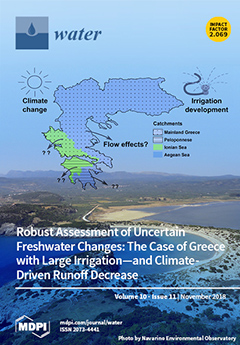Open AccessArticle
Introduction of an Experimental Terrestrial Forecasting/Monitoring System at Regional to Continental Scales Based on the Terrestrial Systems Modeling Platform (v1.1.0)
by
Stefan Kollet, Fabian Gasper, Slavko Brdar, Klaus Goergen, Harrie-Jan Hendricks-Franssen, Jessica Keune, Wolfgang Kurtz, Volker Küll, Florian Pappenberger, Stefan Poll, Silke Trömel, Prabhakar Shrestha, Clemens Simmer and Mauro Sulis
Cited by 23 | Viewed by 6819
Abstract
Operational weather and flood forecasting has been performed successfully for decades and is of great socioeconomic importance. Up to now, forecast products focus on atmospheric variables, such as precipitation, air temperature and, in hydrology, on river discharge. Considering the full terrestrial system from
[...] Read more.
Operational weather and flood forecasting has been performed successfully for decades and is of great socioeconomic importance. Up to now, forecast products focus on atmospheric variables, such as precipitation, air temperature and, in hydrology, on river discharge. Considering the full terrestrial system from groundwater across the land surface into the atmosphere, a number of important hydrologic variables are missing especially with regard to the shallow and deeper subsurface (e.g., groundwater), which are gaining considerable attention in the context of global change. In this study, we propose a terrestrial monitoring/forecasting system using the Terrestrial Systems Modeling Platform (TSMP) that predicts all essential states and fluxes of the terrestrial hydrologic and energy cycles from groundwater into the atmosphere. Closure of the terrestrial cycles provides a physically consistent picture of the terrestrial system in TSMP. TSMP has been implemented over a regional domain over North Rhine-Westphalia and a continental domain over Europe in a real-time forecast/monitoring workflow. Applying a real-time forecasting/monitoring workflow over both domains, experimental forecasts are being produced with different lead times since the beginning of 2016. Real-time forecast/monitoring products encompass all compartments of the terrestrial system including additional hydrologic variables, such as plant available soil water, groundwater table depth, and groundwater recharge and storage.
Full article
►▼
Show Figures





